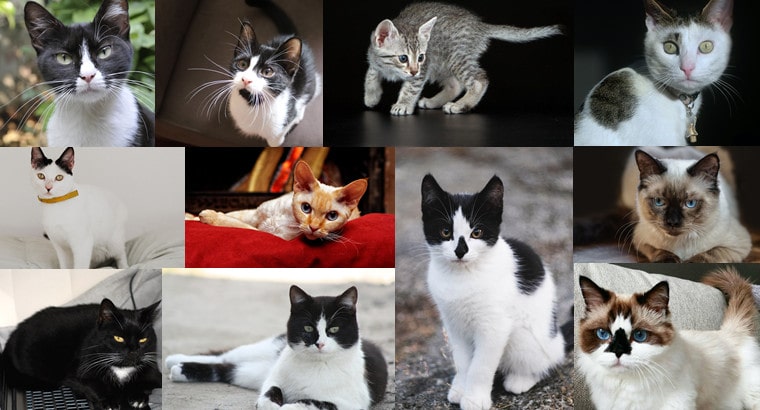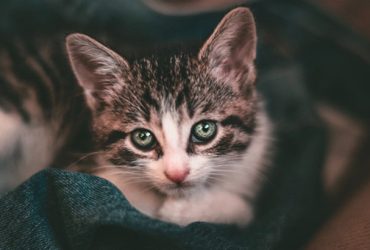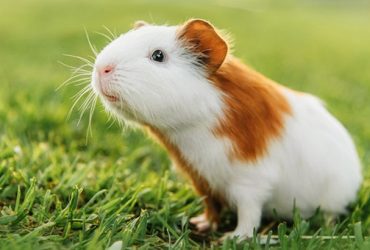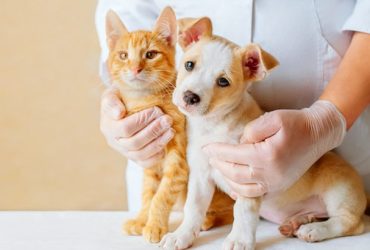Felines are often the go-to choice for a household pet because they’re adorable, intelligent, adaptive, and require less attention. They can be every bit as funny and become attached to their owner as dogs.
Cats come in a variety of breeds with different colors and sizes, but they are more commonly either grey, white, or a mixture of the two. Here’s a blog dedicated to the grey and white cat breeds.
11 Grey And White Cat Breeds
Bicolor patterns of grey and white cat breeds are often measured on a scale of 1-10, with 1 indicating the lowest, with virtually no white spots or tiny white spots, and 10 the highest, denoting more than 60% white coat.
1. Tuxedo
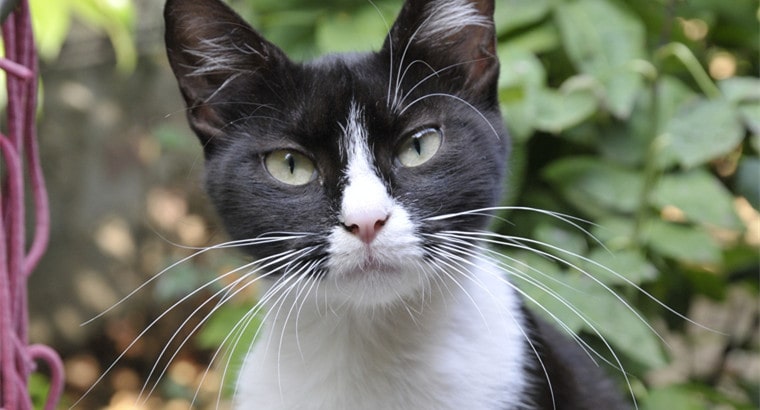
Tuxedo is arguably the best-known variant of bicolored cats. It’s called “tuxedo” because the cat’s coat mildly resembles a tuxedo. The white spot is concentrated more around the chest and belly area and sometimes around the paws as well, giving the impression of white sleeves.
Please note that the term “tuxedo” only refers to the cat’s distinct pigmentation, not the breed. Tuxedo cats aren’t a breed and they don’t necessarily have to be black and white either.
Here’s a fun fact about Tuxedo cats — did you know they were revered as gods by the ancient Egyptians? And yes, Tuxedo cats specifically. About 70% of the cats depicted in ancient hieroglyphics are actually Tuxedo cats.
2. Locket
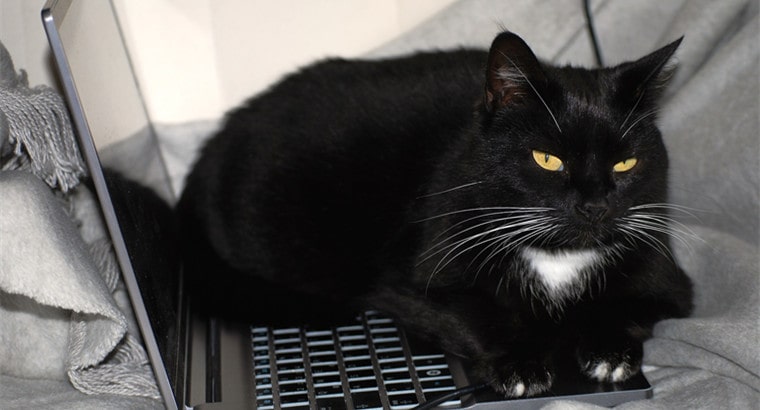
A cat with just one small patch of white fur usually around its chest is a locket cat. This pattern is almost as common as the tuxedo. Locket cats can be all black, all orange, or any color.
Did you know, in India, jet black locket cats are considered a bad omen? In western cultures, black cats have often been used as a symbol for Halloween or witchcraft.
3. Standard Bi-color
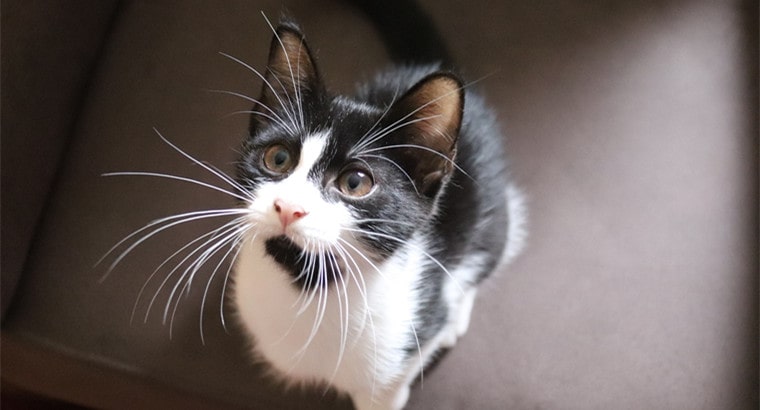
Also referred to as “true bicolor”, standard bi-color cats have a nearly equal ratio of white pigment to color in their coats. These cats are commonly referred to as simple Bi-color cats, which is the umbrella term.
But according to the cat registry Fédération Internationale Féline (FIFe) breeding standards, a true or standard bicolor cat can be identified by the following criteria:
• Color patches should be harmoniously distributed.
• At least 50% of the fur should be colored, but no more than 75%, and the remaining should be white.
The chest and belly of the cat are usually white while the back and head are colored.
4. Mask-and-mantle

Mask-and-mantle patterned cats have colored back, shoulders, head, and white chest and belly. The way their pigment is distributed makes the cat look like it is wearing a mask and cape.
The mask and cape are usually connected but at times can be separated by streaks of white fur. This is one of the more common varieties of bicolor cats, most often found in strays.
5. Cap-and-saddle
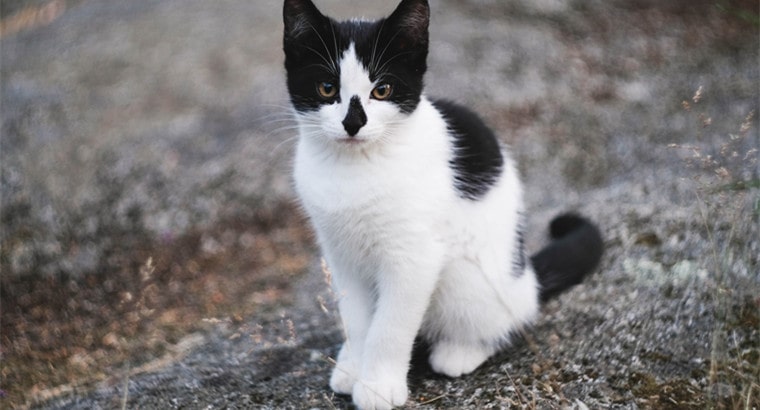
Cap-and-saddle cats are quite similar to “mask and mantle cats” except the cape part is separated by a wall of white fur. This makes the mask shrink into what looks more like a cap and the cape shrinks into a saddle.
And as for the tail, it could be white or not, it depends. Cap-and-saddle cats are uncommon to run into.
6. Harlequin
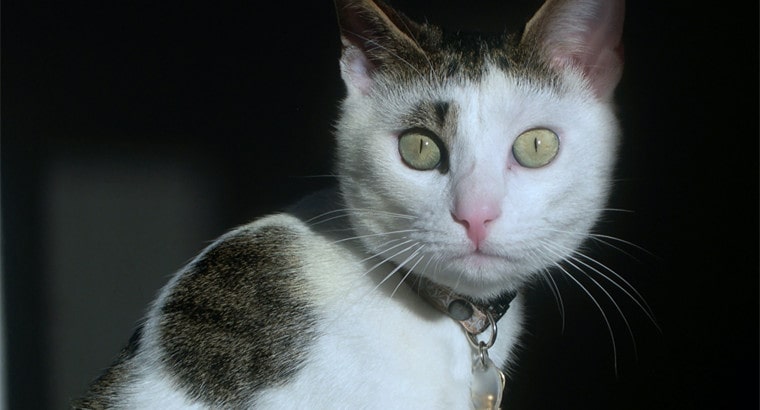
A harlequin cat, as per the FIFe cat show guidelines, is one that’s predominantly white, with solid color patches that cover no less than a quarter and no more than half the cat’s body.
These colored patches have no fixed shape, number of spots, size, or position on the body. They could be anywhere and generally manifest in a chaotic manner, but this gives the cat a more hybrid look.
7. Van
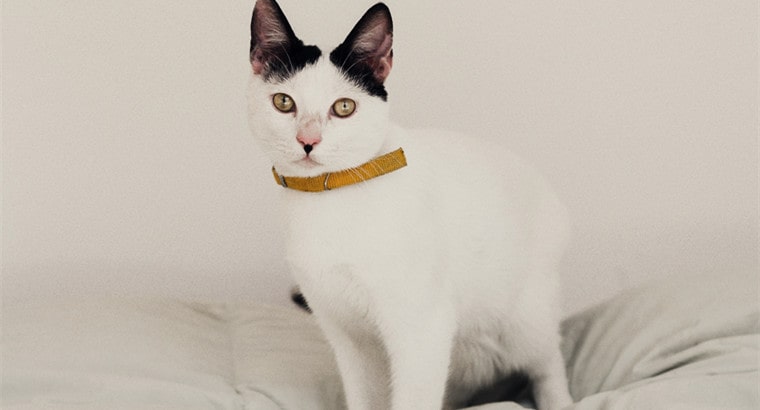
A van pattern is where only the cat’s head, or sometimes the tail, is marked with colored patches. The remainder of the coat is white. The colored part usually exists between the ears and sometimes surrounds the eyes like a mask.
The van pattern is considered native to Turkey because it was the returning crusaders in the 13th century who brought van cats to Europe. They’re pretty hard to find in America, and you’d need to find a breeder that specializes in Turkish cats.
Did you know, in 1992, the Turkish government decided to put the van cat under their direct protection as there were only 92 pure-bred vans left? Today, van cats are rarely exported out of the country. America relies on Europe for its van breeding.
8. Egyptian Mau
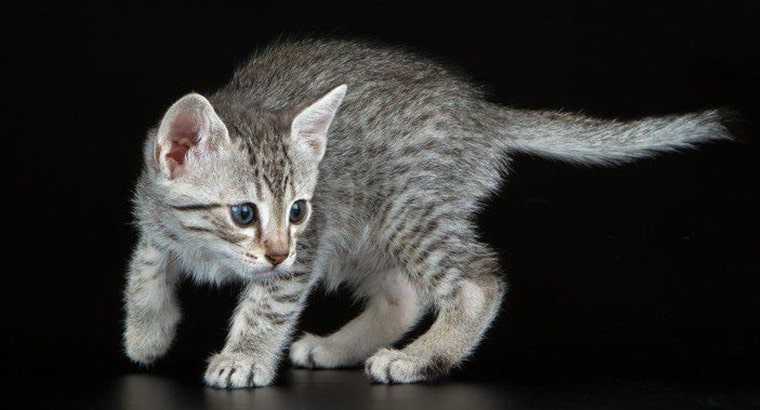
Image source: Pinterest
Egyptian Maus are a rare breed of cats characterized by their silver/greyish fur with spots that occur on the tip of the hairs of its coat and tabby stripes on the face. “Mau” is the Egyptian word for cat. The ancient Egyptian god of the sun was portrayed as an Egyptian Mau.
Did you know that Egyptian Maus are the only breed of domestic cats with naturally occurring spots? That’s why most Maus are kept pure-bred.
Although small in size, the Egyptian Mau is more muscular than your average cat. They’re also rather boisterous, playful, and like to assert their territory but do so with a balanced temperament.
9. Devon Rex
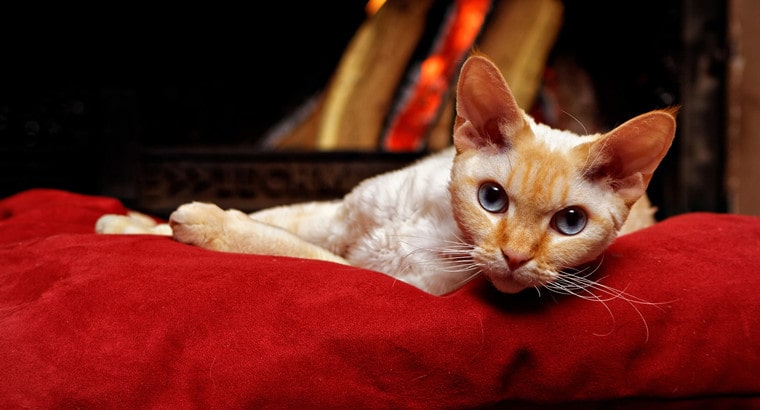
Devon Rex is a breed of cat that originated in England around the 1950s. They’re recognized by their large ears and especially slender bodies. This is an incredibly intelligent breed, capable of learning many skills but not the best at obeying commands. Although you can’t really expect much else from a cat.
They have a short, curly coat and come in many different bicolor and tricolor combinations. Chocolate brown, silver fawn blue, beige, orange cream, and ebony red, just to name a few.
The average Devon Rex is a people-pleaser, attention seeker, and a jest. They’re incredibly curious creatures, which often plays out hilariously. Another common trait among Devons is that they like to show affection by getting close to your head and neck for licks or cuddles.
10. Munchkin – Grey, And White
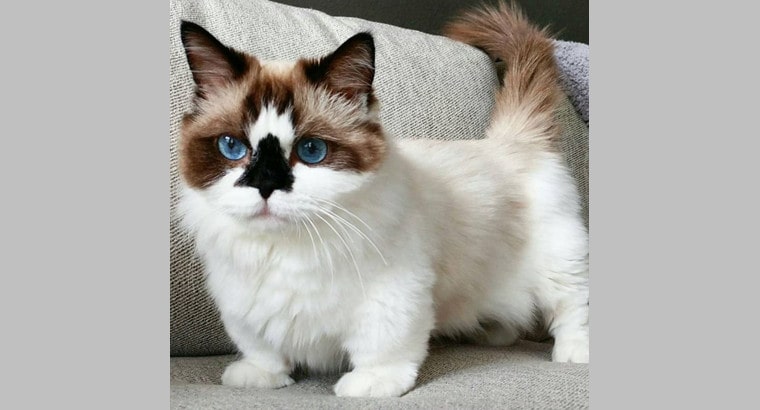
Image source: Pinterest
Munchkins are like the Dachshunds of the cat world because they share a similar genetic mutation, short stubby legs. However, don’t underestimate those tiny legs. Munchkins may not be the best sprinters but they are surprisingly fast even with small legs.
Munchkin cats can come in a range of sizes, colors, and pattern types. They’re known for being outgoing, intelligent, and loyal to their owners, no different than a dog.
The first instances of short-legged cats were recorded as far back as the 1940s. Although it wasn’t until 1991 that the Munchkin cat was first introduced to the public via a televised cat show by The International Cat Association (TICA).
In 1995, TICA accepted Munchkins into their breeding program. However, this has been met with numerous controversial responses expressing concern over the health issues associated with the Munchkin’s mutation and some even calling TICA out for unethical breeding.
11. Ragdoll – Grey, And White
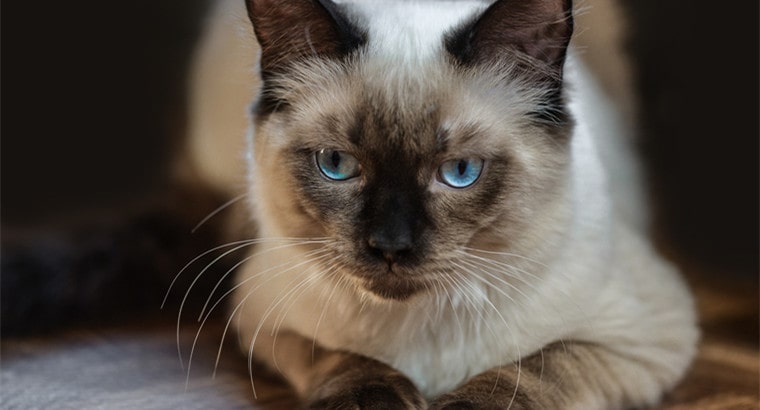
Ragdolls are a fluffy cat breed known for their docile and placid temperament. They got the name Ragdoll because of the first stock bred in the 1960s going limp and relaxed whenever they were picked up. Similar to a ragdoll. They’re also sometimes referred to as the “puppies” of cats due to their friendly and affectionate demeanor towards other house pets.
Their coat hairs are generally medium-length and white in color, with a V-shaped colored mask on their face that distinguishes them. Ragdolls are available in a number of colors.
What Causes These Grey and White (Bi-Color) Patterns in Cat Breeds?
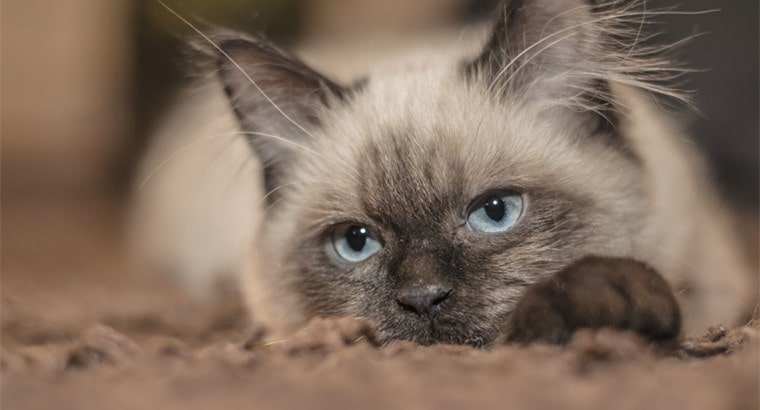
A bicolor cat, also known as a piebald cat, is a cat with primary-colored fur combined with white spotting that forms unique patterns. The amount of white spotting that will show up on a cat’s fur varies according to the cat’s genes.
White spotting is typically measured on a 1-10 scale. The letter “S” is used to denote the white spotting gene. If a cat inherits two dominant alleles (SS), it will develop white spotting over more than half its body.
According to a 2016 study, the process by which cats inherit this gene is completely random. They may end up inheriting strong S genes or weak S genes regardless of what the parent had.
However, what they will share in common with the parent is the order and location of the white spotting. For a lot of cats, it begins on the chest or belly, followed by the front paws and face.
Are BI-color Cats Friendly?
Yes, they are. In fact, a lot of bi-colored cat owners have compared them to dogs in terms of their affection, friendliness, and ability to form deep bonds with the owner or other animals.
And this sort of statement generally comes from owners that own both a cat and a dog. Bi-colored cats can learn to get along with anyone with time, including their arch-nemesis, the dog. This makes them the number 1 choice for cats to raise as pets.
A Few Parting Words
Hope you found this blog on the different variations of grey and white cat breeds interesting. If you’re considering adopting a bi-colored cat, the only thing you should concern yourself with is the cat’s health and history, not the patterns on its coat.
There’s no strong evidence of any connection between pattern variation and docileness, it all depends on how well a cat is raised.


